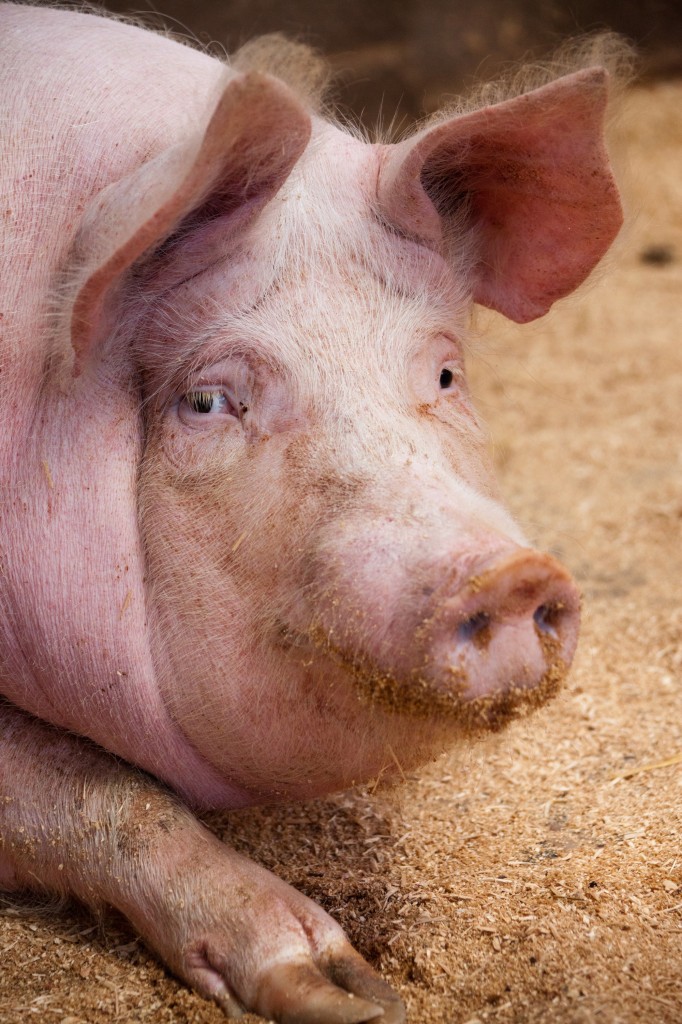 China has been hit by what seems to be a never ending series of food safety scares. In recent times there has been Clenbuterol in meat, Aflatoxin in dairy, dye in buns, antibiotics in chickens, and pigs in the river. Consumers across China are demanding change, the Government is clearly committed to bringing about improvement, and there is no lack of capital to fund the modernisation process. However, Frank Gibson, an independent consultant for Interchina, says we should not expect this issue to suddenly disappear. In the meantime he says that the current situation should provide opportunities for foreign companies for some time to come.
China has been hit by what seems to be a never ending series of food safety scares. In recent times there has been Clenbuterol in meat, Aflatoxin in dairy, dye in buns, antibiotics in chickens, and pigs in the river. Consumers across China are demanding change, the Government is clearly committed to bringing about improvement, and there is no lack of capital to fund the modernisation process. However, Frank Gibson, an independent consultant for Interchina, says we should not expect this issue to suddenly disappear. In the meantime he says that the current situation should provide opportunities for foreign companies for some time to come.
The fundamental problem with food safety issues in China is that there is a huge gap to bridge. In the last twenty years the shopping experience of the Chinese consumer has become increasingly similar to that of its modern Western counterpart. However, investment along the supply chain over this period has not been balanced. The food production end—farming—has remained largely dominated by peasant agriculture.
Changes in agricultural production and improvements in productivity have not kept pace with modernisation in other areas. The front end is twenty-first century but the back end often looks medieval.
With political commitment and sufficient investment the agricultural supply chains can and will modernise. However there are major hurdles to overcome. These include:
- Limited modern farming capabilities, skills and culture (the ‘know how’ or ‘software’ that is critical to modernisation);
- Barriers to land consolidation (particularly the ambiguity and uncertainty around land use rights);
- Decades of environmental neglect resulting in soil contamination and water pollution;
- Conflicting interests between central government and local authorities;
- An evolving moral framework for local companies that can manage the tension between profit and social responsibility; and
- Regulation and surveillance which has been rapidly improving but still playing ‘catch up’.
The first of these hurdles—the ‘know how’ or software—is my focus here. While sufficient capital can facilitate agricultural intensification this does not necessarily result in modern standards of safety and quality. It is far easier to build the hardware than the software.
Much of the knowledge and skill base, which is fundamental to modern farming, has been built up in more developed agricultural economies over multiple generations. Transferring this capability, or ‘know how’, to a less developed environment is difficult and time consuming.
In early September 2008 the Chinese and international media exploded with news of a food safety crisis in infant formula. It was a moment that would become pivotal in the history of the modernisation of agricultural supply chains in China.
The ‘Sanlu Incident’ would widen into one of the most frightening food safety scandals China has ever 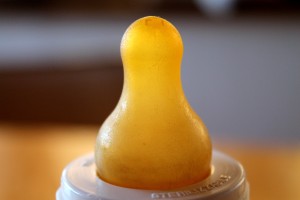 experienced, with nearly 300,000 babies affected and some 80 per cent of the dairy industry experiencing contamination. In reality this could hardly be called an ‘incident’. Nor was it specifically about Sanlu or even really about melamine. It was a structural problem that reflected much deeper problems, not only in dairy but across virtually all agricultural supply chains.
experienced, with nearly 300,000 babies affected and some 80 per cent of the dairy industry experiencing contamination. In reality this could hardly be called an ‘incident’. Nor was it specifically about Sanlu or even really about melamine. It was a structural problem that reflected much deeper problems, not only in dairy but across virtually all agricultural supply chains.
In the previous 10 years the dairy industry had grown rapidly. From being worth less than USD 2 billion at the start of the decade it was worth more than USD 25 billion by 2008. The increasing demand for raw milk was met by peasant farmers who typically had no previous experience with dairy. Most of the incremental supply was coming from small-plot, mixed farmers who would add a cow to provide a daily source of cash. At the time of the crisis less than three per cent of milk supply came from farms actually owned and operated by dairy processors.
The increasing scale and fragmentation of the supply base resulted in the proliferation of intermediaries (milk collectors and milk traders). Partly due to poor local genetics, but more often because many farmers lacked the knowledge to properly feed and care for their animals, milk quality was generally poor. Some of these intermediaries would add substances in order to pass quality tests.
Substances routinely added included preservatives, soy, ground animal parts, hydrogen peroxide, 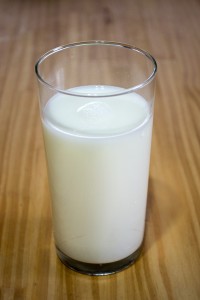 antibiotics and fat. Melamine was added to enable the dilution of milk with water, hence increasing its volume and the amount of income that could be earned. Melamine, an industrial chemical commonly used as a flame retardant or a binding agent, is rich in nitrogen which registers as protein on routine tests. It can also result in kidney damage in humans, which in more extreme cases can be fatal.
antibiotics and fat. Melamine was added to enable the dilution of milk with water, hence increasing its volume and the amount of income that could be earned. Melamine, an industrial chemical commonly used as a flame retardant or a binding agent, is rich in nitrogen which registers as protein on routine tests. It can also result in kidney damage in humans, which in more extreme cases can be fatal.
There were some prosecutions in the aftermath and heavy penalties handed out to a few culpable individuals. However, the government knew that this was a structural problem that required a structural response. Protecting the livelihoods of peasant farmers had always been a pressing government priority, but there was now a realisation that the modernisation of the supply chain must take precedence. Food safety was the greater threat to social stability.
Since the ‘Sanlu Incident’ decisive steps have been taken to improve standards and surveillance, and to modernise the dairy supply chain. In particular there has been increased pressure on dairy companies to integrate supply chains and to take more control over their own raw milk sourcing. As a result many peasant farmers have exited the industry and some large-scale, professional players have entered. A consequence has been significant herd improvements driven by rapidly increasing live heifer imports from Australia and New Zealand and the much wider use of imported and higher-quality semen.
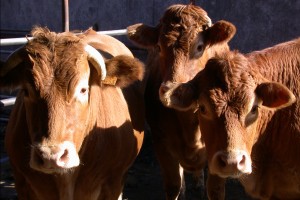 More importantly the number of cows resident in large-scale, modern farms has increased dramatically. Today possibly 15 per cent of the China dairy herd resides on farms that house 500 or more head and a further 20 per cent on farms with more than 100. Currently this 35 per cent of farming establishments contributes something like 55 percent of the raw milk supply.
More importantly the number of cows resident in large-scale, modern farms has increased dramatically. Today possibly 15 per cent of the China dairy herd resides on farms that house 500 or more head and a further 20 per cent on farms with more than 100. Currently this 35 per cent of farming establishments contributes something like 55 percent of the raw milk supply.
Considering the number of cows involved this probably represents the most rapid modernisation of a herd that has ever been achieved in the history of dairy farming. However, the fact remains that 65 per cent of the cows are still on ‘farms’ that are largely peasant-based. This demonstrates the challenge of creating a reliable, modern food supply chain in China.
Building the software
Three basic things you need to modernise a dairy herd are:
- Capital (to build farms, buy equipment, and fund operations);
- Dairy cows (particularly healthy ones with good genetics); and
- Dairy ‘know how’ (how to look after cows and get milk out of them).
There is no shortage of capital looking to invest in agricultural supply chain modernisation in China. Getting good cows, however, can be a bit harder. Imports from Australia and New Zealand have soared but these are limited (those herds are much smaller than China’s). However, adult milking cows calve once a year which means good growth can be achieved once the critical mass of an installed base is in place.
The real constraint is dairy ’know how’. How to look after cows, keep them disease free and produce high volumes of good-quality milk. This requires a combination of skills and knowledge that takes time to acquire. In most dairy farming nations this capability is built up through generations of experience.
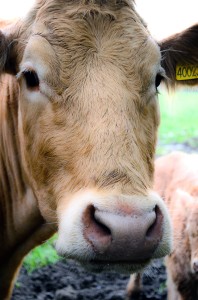 These factors clearly manifest in cow productivity. The best foreign-invested farms in China are achieving cow productivity of up to 30 litres per day and some—a handful—as high as 35 litres. By comparison the average peasant farmer in China has struggled to achieve much over 12 litres.
These factors clearly manifest in cow productivity. The best foreign-invested farms in China are achieving cow productivity of up to 30 litres per day and some—a handful—as high as 35 litres. By comparison the average peasant farmer in China has struggled to achieve much over 12 litres.
While this modernisation is taking place the demand for high-quality, safe milk will continue to run ahead of supply. The average farm gate prices in late 2013 were around USD 0.6 per litre (approximately RMB 3.7)—well above international prices. The best farms are getting up to RMB 5.5 per litre or about USD 0.9 at farm gate. This is about the same price you would pay for a litre of packaged, branded milk in a supermarket in Australia.
The demand for high-quality, safe milk in China is going to stay ahead of supply for a considerable period of time. When it will come into balance, particularly in the context of inevitable land and water constraints, is anyone’s guess but it definitely will not be any time soon.
Is the chicken foul?
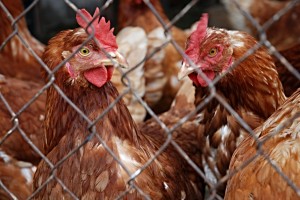 Poultry is another example of the time that it can take to truly modernise a supply chain. The poultry industrialisation process started in the 1990’s, long before it had any traction in dairy, and the scale today is mind boggling. The average inventory includes more than 11 billion chickens and over 4 billion water fowl.
Poultry is another example of the time that it can take to truly modernise a supply chain. The poultry industrialisation process started in the 1990’s, long before it had any traction in dairy, and the scale today is mind boggling. The average inventory includes more than 11 billion chickens and over 4 billion water fowl.
Today, poultry meat production in China is dominated by large, integrated operations that include feed processing, hatching, bird raising and meat processing. Some of the larger operators process hundreds of millions of birds per year. These are massive operations employing hundreds of millions of dollars of capital and, in terms of hardware, are as advanced as anything else in the world.
However, recent events demonstrate how far the industry still has to go in winning the trust of consumers. Early in 2013 there was an H7N9 bird flu scare, which saw many Chinese consumers stop eating chicken. KFC, the most successful fast food chain in China, was particularly hard hit. About the same time it was discovered that a number of the KFC suppliers were using illegal antibiotics and hormones. In a single month the company’s sales fell by more than 40 per cent.
From the perspective of scale, capital employed, and modern plant and equipment China’s poultry industry can match anything else on the planet. Nevertheless there are still areas of significant weakness. Liveability rates among the local processors tend to be much lower, disease rates much higher and there is believed to be widespread use of antibiotics and hormones.
The basic problem, again, comes down to the software or the farming ‘know how’, such as:
- Poor bio security;
- Poor hygiene practices; and
- Poor health management.
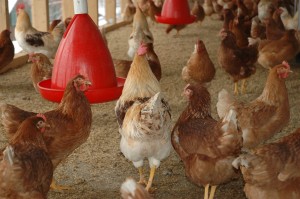 These three concerns span all the commercial animal supply chains in China. Improvements in these areas do not generally require the investment of huge amounts of capital. It is more often around education, awareness and the development of different behaviours and working cultures.
These three concerns span all the commercial animal supply chains in China. Improvements in these areas do not generally require the investment of huge amounts of capital. It is more often around education, awareness and the development of different behaviours and working cultures.
China farming is in the process of developing the necessary disciplines and standards to best protect against animal diseases. Basic practices around the use of disinfectants in wheel and foot baths, regular surface spraying and the management of traffic between farms can have a huge impact on disease prevention and productivity. However, developing good bio security, hygiene disciplines and animal health management is a process that takes time.
A Safer Future
The reality is that agricultural supply chains in China are modernising. This is happening at a faster pace than modernisations which have occurred at other times and in other places. There is serious commitment from government, vocal demand from consumers and sufficient capital from investors to ensure the momentum is maintained. Nevertheless, the imbalanced development of the past means there is a big correction to make and a lot of problems to address in the process.
What the final landscape will look like, given some of the unique features of this economy, such as the complexity of land use rights and the sheer numbers of peasant farmers, is difficult to predict. However, what is clear is that the process will provide a lot of opportunities for foreign companies for a considerable period to come.
Frank Gibson is an independent consultant who regularly collaborates with InterChina. He has been advising international companies on China business strategy for nearly twenty years. The majority of his work has been dealing with complex business problems across a mix of market entry, growth, product, and route-to-market issues. He has extensive experience in assisting multinationals acquire local operations and assets and has worked across many different sectors, but has particularly deep experience in food, beverage, and other FMCG.
InterChina Consulting is a leading strategy and M&A advisory firm in China. InterChina’s team of 60 professionals has conducted over 500 strategy projects and closed over 160 transactions. The firm has offices throughout China, the US and Europe, and are members of IMAP, a leading global investment banking organization. For over 20 years, InterChina has delivered results for clients in the sectors of automotive, machinery & industrial, chemicals and energy, consumer & retail, and healthcare.



Recent Comments